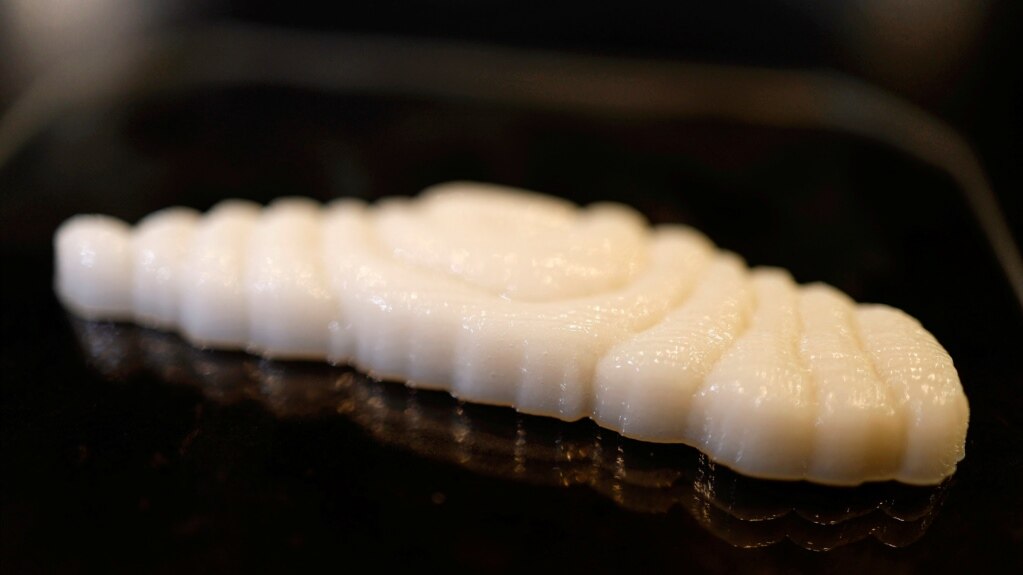An Israeli company says it has 3D printed the first ever ready-to-cook fish fillet using animal cells grown in a laboratory.
Lab-grown beef and chicken have drawn attention as a way to get around the environmental issues linked to farming. But few companies have explored lab-grown seafood.
Israel's Steakholder Foods has worked with Singapore-based Umami Meats to make fish fillets.
Umami Meats takes cells from a kind of fish called grouper and grows them into muscle and fat. Steakholder Foods then adds them to a 'bio-ink' that works with special 3D printers. The result: a narrow fillet that copies the properties of sea-caught fish.
Umami hopes to bring its first products to market next year. Singapore will be first, and then countries like the United States and Japan after official approval.
The lab-grown fish is developed in a process known as cell cultivation. Cell cultivation alone is still too costly to match the cost of traditional seafood. So, for now, the fish cells are mixed with plant-based substances in the bio-ink.
A glass dish moves in the 3D printer, the white fillet building mass with each pass. It breaks apart easily like normal fish. When fried and seasoned, it is hard to tell the difference.
"As time goes by, the complexity and level of these products will be higher, and the prices linked to producing them will decrease," said Arik Kaufman of Steakholder Foods.
The process is simpler than with beef, but there are some difficulties. Cow stem cells have been studied a lot. But much less is known about fish, said Umami's chief, Mihir Pershad.
"We have to figure out what the cells like to eat, how they like to grow, and there's just not so much literature to start from," he said.
Pershad added, "The number of scientists, you can imagine, working on fish stem cell biology is a small fraction of those working on animal cells and human cells."
Umami has figured out a process for grouper and eel and hopes to add three other at-risk species in the coming months, Pershad said.
Meeting the price of fish from the sea is a key difficulty.
Pershad said the company wants buyers to choose their product "based on how it tastes and what it can do for the world and the planetary environment.”
He added, “And we want to take cost off the table as consideration."
I’m Ashley Thompson.

